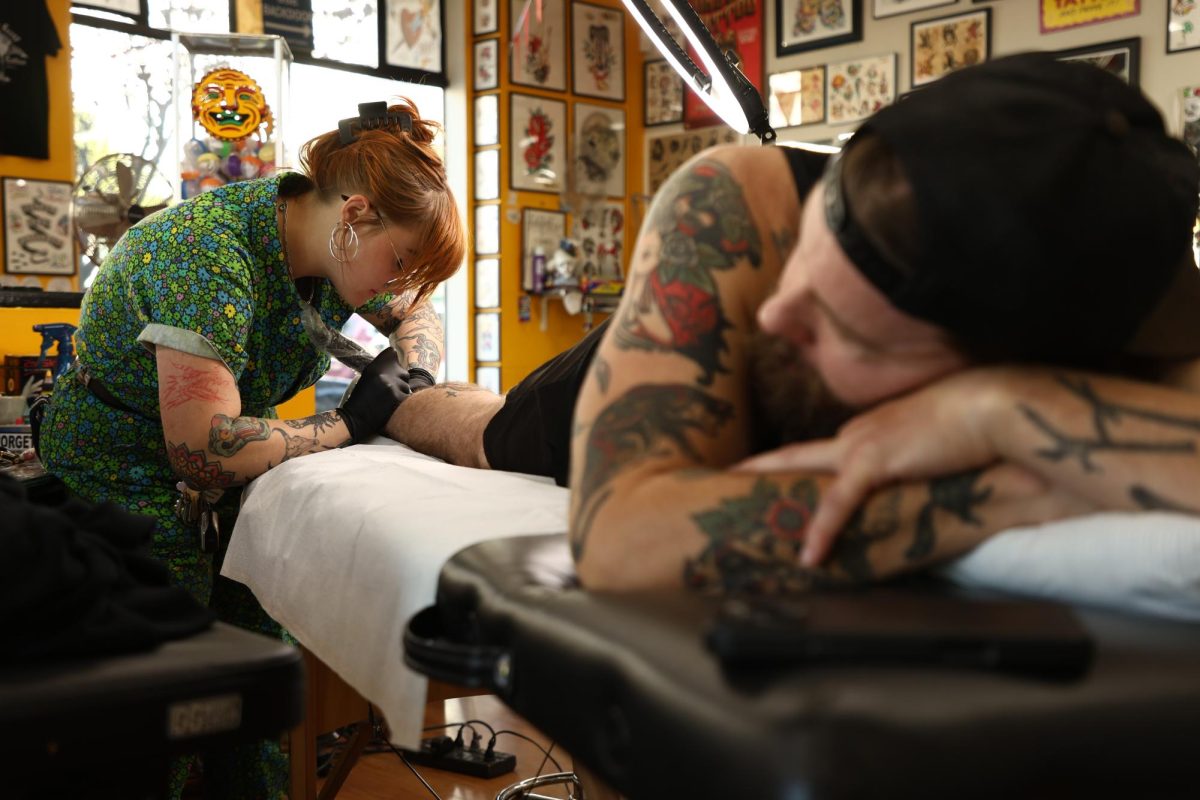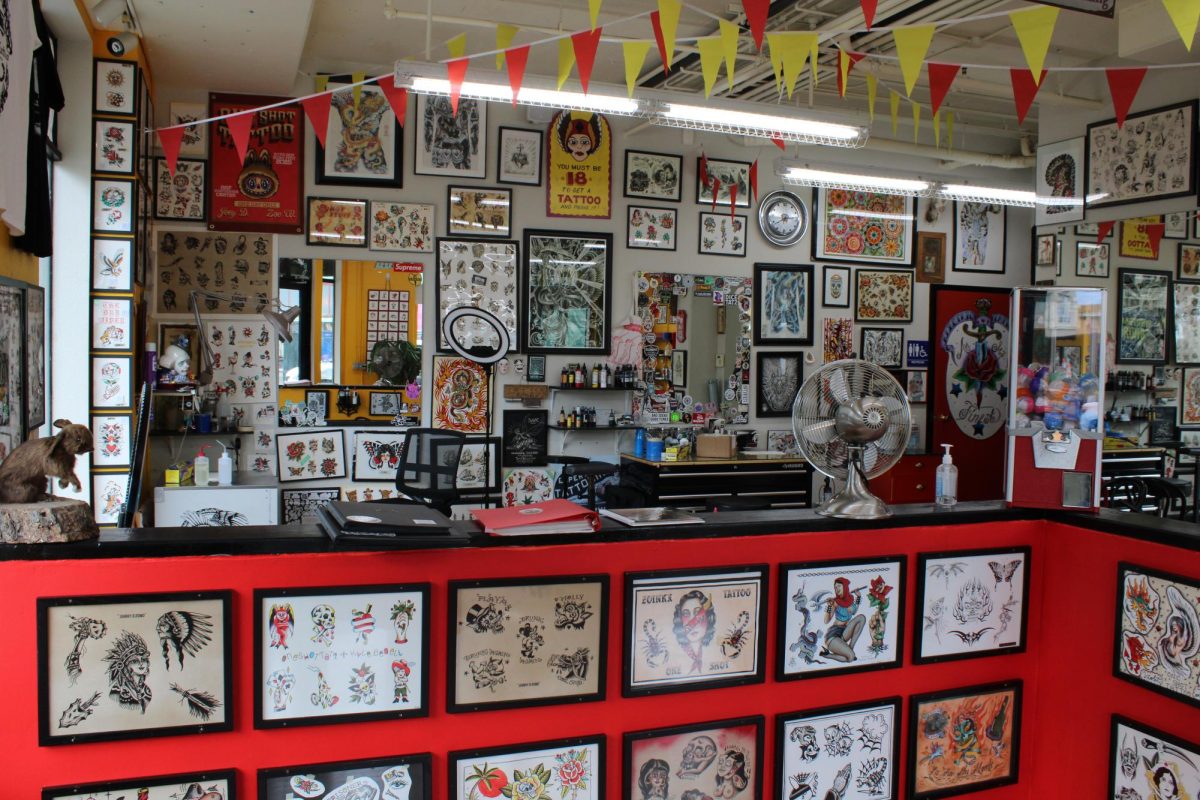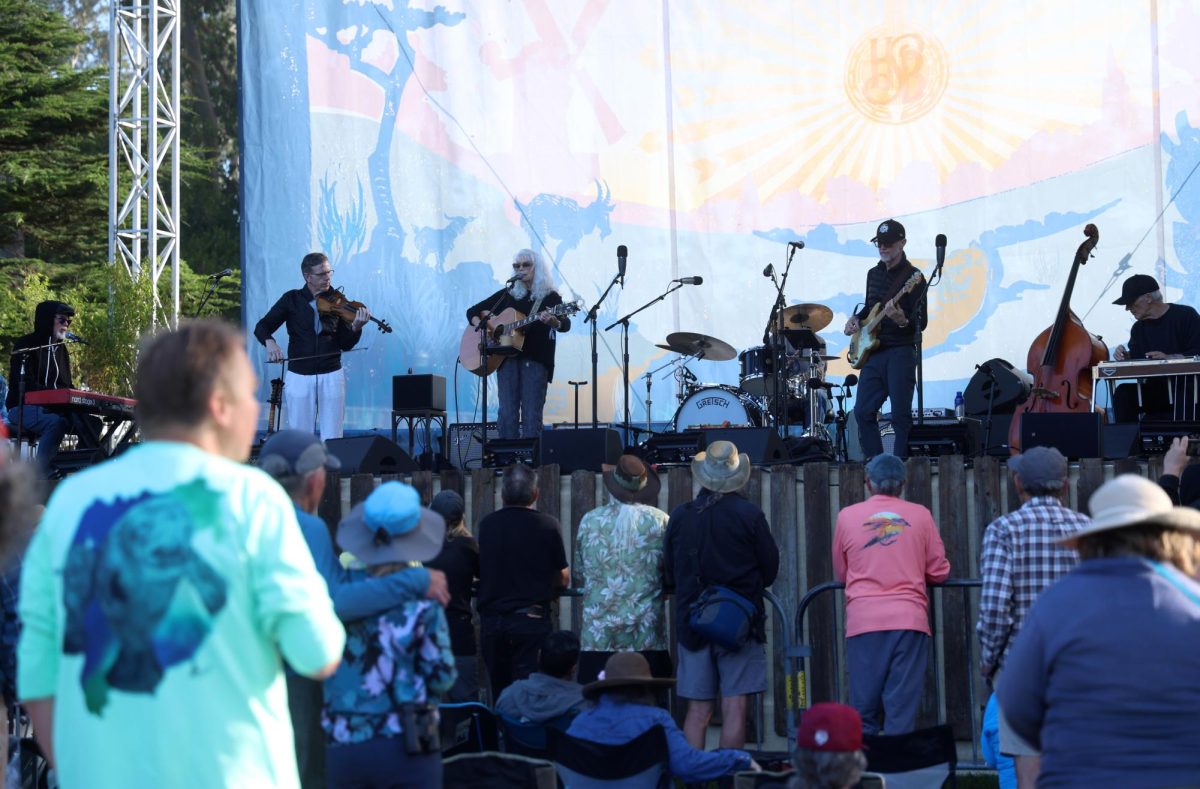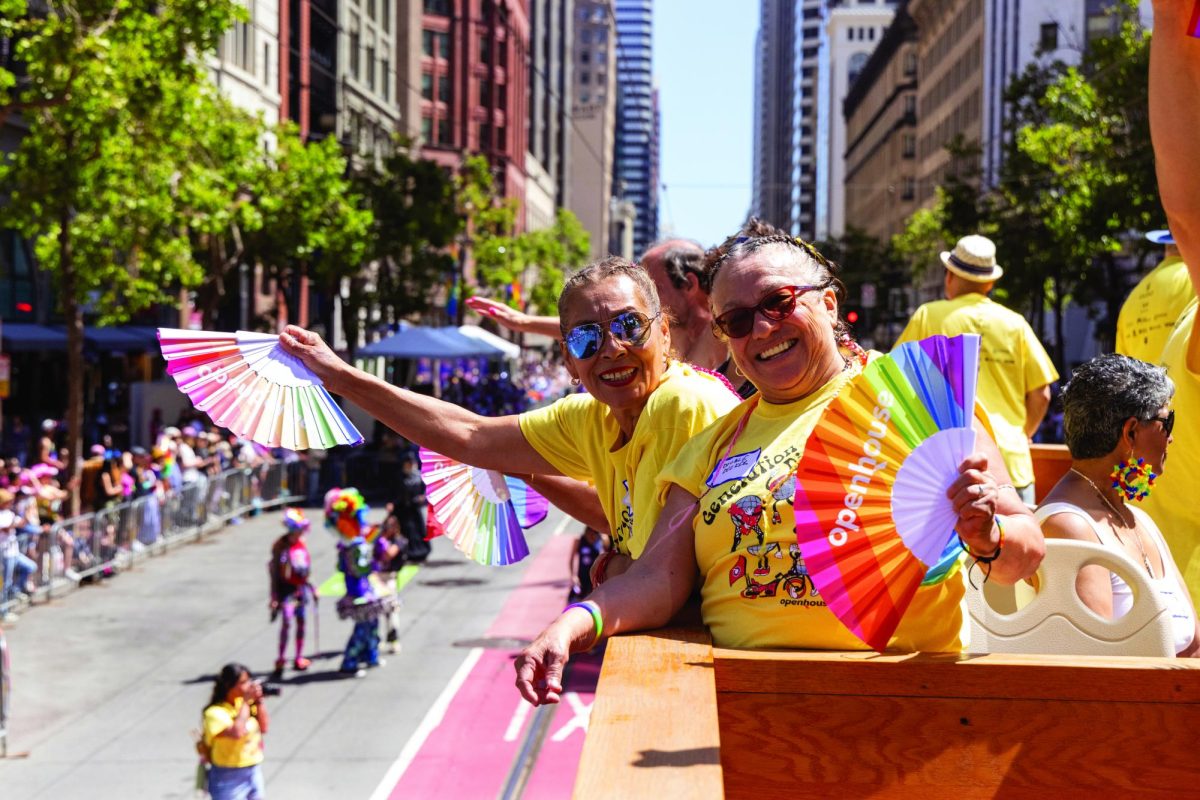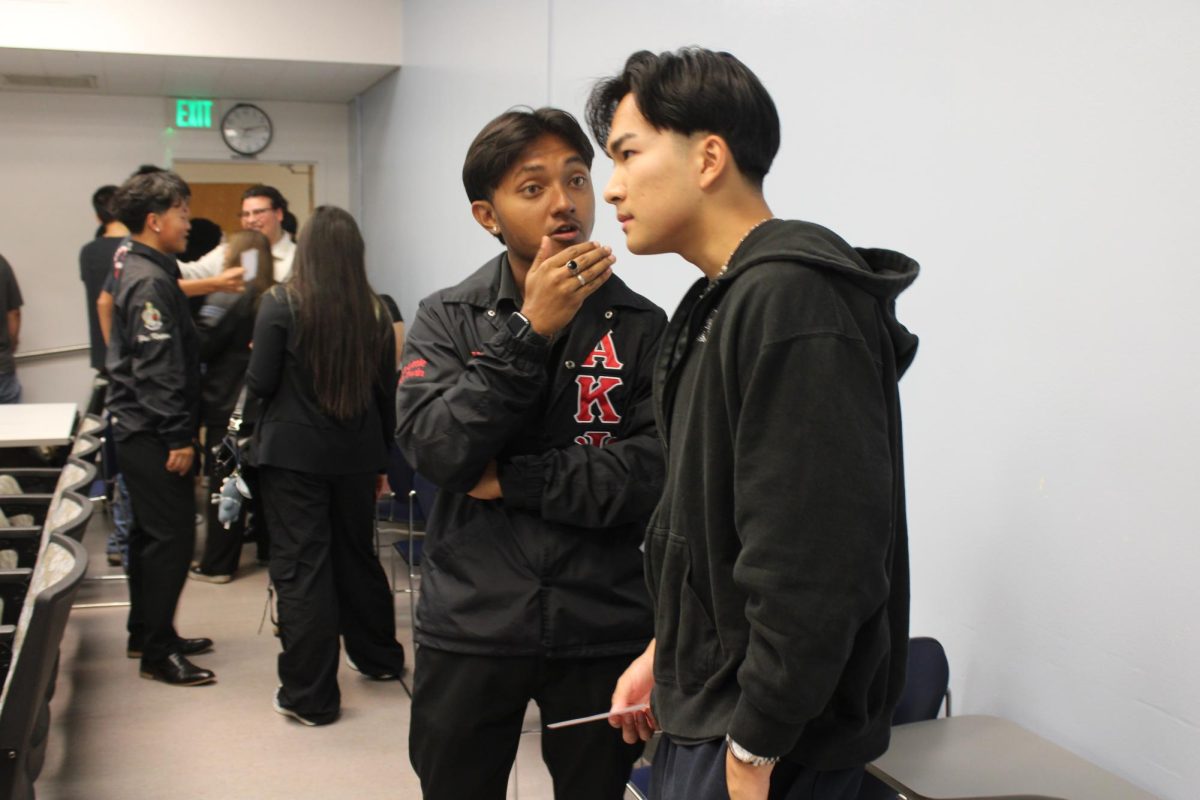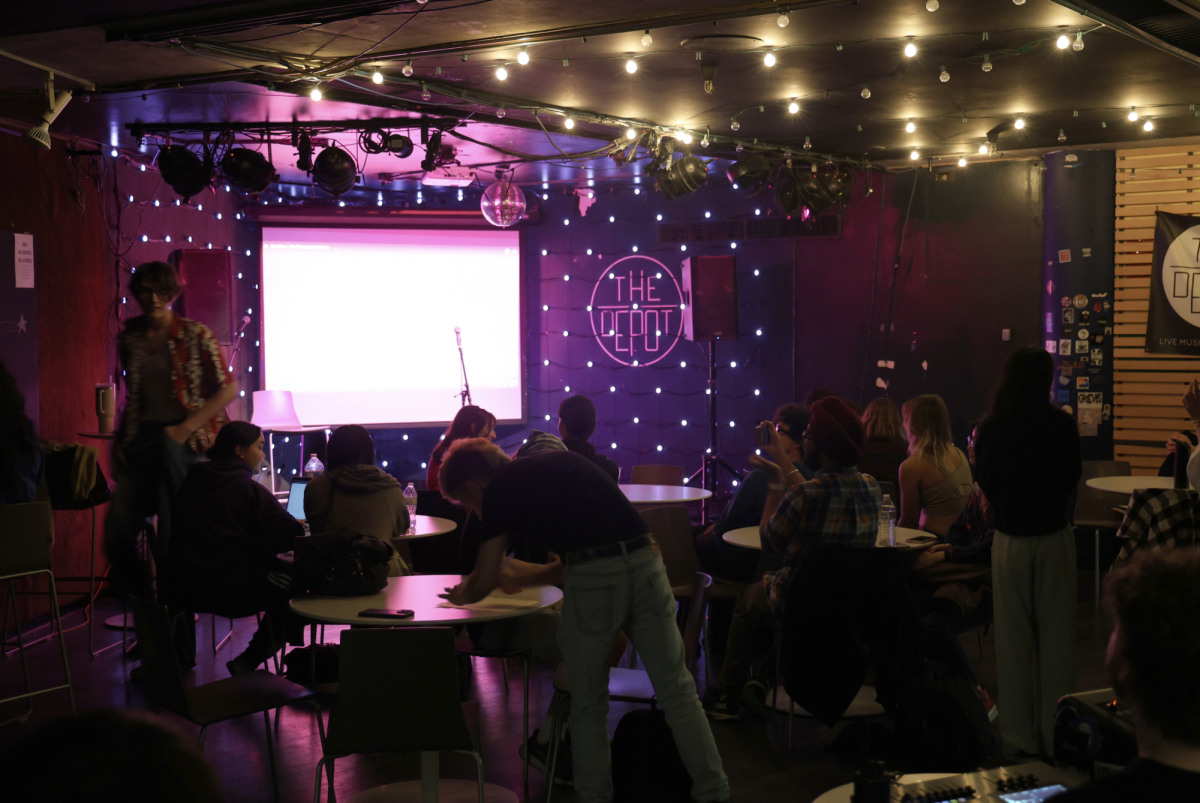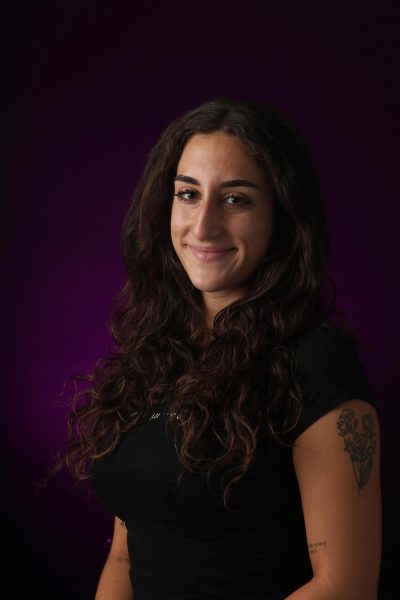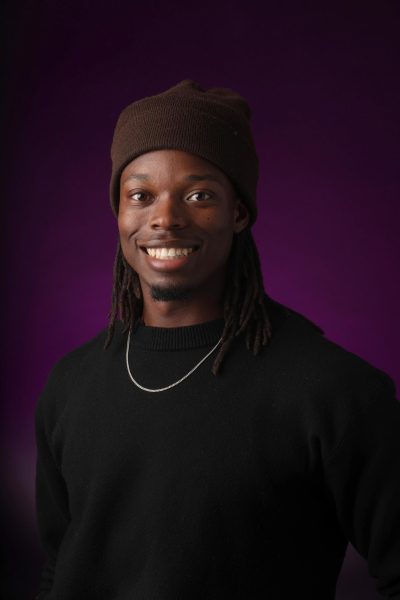The bell above the door rings as it opens and a gust of crisp air fills the room as people file in. There’s the sound of buzzing and the drowned out voices of conversation peek through the background noise of the tattoo parlor. Laying flat on your stomach, looking toward the ground, the tattoo artist drags the needle of his tattoo gun across your previously unmarked skin. Like a deep scratch, it leaves dark and permanent strokes in its path. The anticipation to see the final tattoo slowly diminishes as the piece comes to a finish. You hear the crinkle of the film protectant, and the tattoo is complete.
Art can be louder than words, and sometimes the most powerful words are permanently etched onto our skin, and for some, they aren’t even words at all. Tattoos have existed for thousands of years. They appear in many cultures to express a variety of meanings: as art, punishment, an expression of their love toward significant others. And even now, tattoo culture continues to evolve, allowing for new creative ideas and designs.
Culturally Inked Up
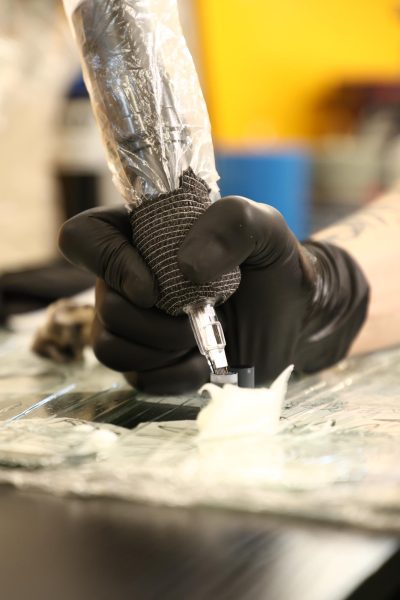
There are some cultures, like those of Polynesian and Filipino peoples, that have their own traditional tattoos to symbolize status, courage and tribal identity. Currently, with the growing threat of censorship and cultural eradication, tattoos can be a way to artistically represent heritage and identity. Tattoos are a powerful tool to represent the individual or things they love. What is it in people that makes them think past the permanence of the art and look at the message it’s displaying instead?
Jeremy Vargas, a kinesiology major, has six tattoos, with a majority of them being symbolic Filipino tattoos dedicated to his culture and family. “I’m very proud to be Filipino,” said Vargas. “I feel like Filipinos don’t have a lot of representation, like mainstream platforms – I just wear it proudly.” Etched onto his right arm is his first tattoo, the word Katapatan — which is defined as loyalty — in indigenous Filipino writing. But Vargas interprets its meaning as “righteousness.” He also dedicated a large portion of his left arm to a portrait tattoo of his late grandmother, Luzaida Vargas. “[And] I think it felt more meaningful for me to get my portrait of my grandma, who immigrated from the Philippines and I got it in the Philippines,” said Vargas.
Personally and Permanently Connected
Today, the spectrum of tattoo art has grown to include hundreds of different styles, including fineline pieces, patchwork, and cybersigilism, which have become prominent styles in 2025. But this new era of tattoo design hasn’t always been this expansive. Before these styles, the tattoos commonly seen were embedded in American traditionalism and realism. Breagha Mozian, a hospitality management major, has about 20 tattoos covering her arms and chest, with most of them being fineline or patchwork. Instead of planning ahead where her tattoos would be, Mozian just places them where they will flow best on her body.
While most of her tattoos aren’t tied to a specific meaning, Mozian has a personal sentiment behind the permanence aspect: Alzheimer’s runs in her family. Since she was little, Mozian was afraid of losing her memories. She decided to get tattoos to keep lasting moments on herself forever. “It’s almost like tying a string around your finger,” said Mozian. “If it’s physically on your body, you’re going to have a better chance of remembering it.”
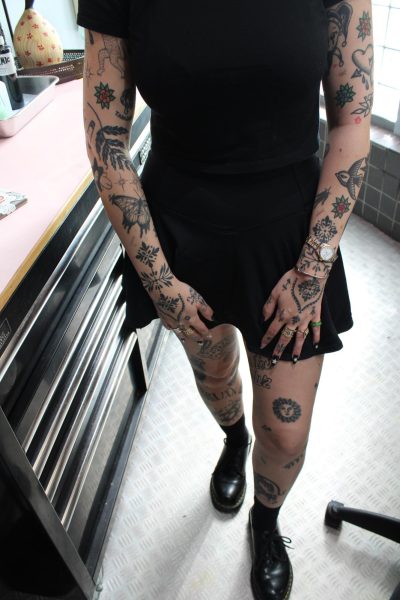
Another style of tattoo design, which stems from the origins of tattooing, is hand poke, or more commonly known as stick and poke. Since the earliest records of tattooing, ancient cultures such as the Egyptians and Romans have used hand poking to mark themselves with traditional symbols.
Nune de Leon, a local hand-poke tattoo artist, was first introduced to the style after getting their own hand-poked tattoos and purchasing a kit of supplies online to start doing their own. “I just like, on a whim, didn’t tell anyone and just closed my door and tattooed myself,” said Leon. “Tattooing yourself is like really intimate and it’s also hard because it’s like painful.” Leon appreciates the aspect of being able to go with the flow of stippling tattoos and creating the “rhythm of hand poke.”
Leon ties in their love for hand poke with their connection to spirituality. They describe the act of hand poke as “a practice of medicine giving.” The intention behind permanently marking someone and sharing that connection with their client is what attracts Leon to the process. “There’s something that’s … spiritual in that sense of like you’re putting intention into what you’re doing,” said Leon. “So the intentions that you put into the tattoo are important because it’s an energy that’s going to be with them for a long time outside of just the session.”
Aside from the heritage aspect embedded in tattoo culture, there’s also the symbolic identity aspect. Throughout history, tattoos have symbolized a number of things: to identify Jews in the Holocaust, to exhibit hate symbols such as a swastika or to identify gang members. Carmen VanderHeiden Brodie, co-founder of Removery — which provides high quality laser tattoo removal — developed a program called INK-nitiative. The program provides free tattoo removal to eligible individuals, such as former gang members, formerly incarcerated people and survivors of human trafficking or domestic abuse. The initiative focuses on removing tattoos on the hand, neck or face areas. “Anything that’s a jobstopper for those formerly incarcerated or formally in a gang, just wanting to make a life change, and a lot of times they can’t afford it,” said Brodie about the people they serve.
Behind the imagery of these tattoos are the artists who use caution and precision to produce crisp, neat lines and appealing art. Connal Brown, who was initially inspired by an art course he took in college, decided to try tattooing and has since become an established tattoo artist.
Brown says regardless of whether a cultural or religious tattoo aligns with his beliefs or not, it’s about the imagery that stands out to him. “I actually have a lot of fun researching about their culture or whatever it is,” said Brown. “And to make sure that they do get something that, you know, resides with them and it’s not conflicting.”
Apart from the enjoyment of tattooing, artists such as Zoe Weitala of One Shot Tattoo are able to leave their marks on people forever, literally. “My favorite part about it is, I think, just the fact that it is one of the most beautiful collaborations that I will ever get to do with another person, even if it is just something silly or a little doodle, whatever it may be,” says Weitala. “Tattoos are so special for that it just takes you right back to that moment in time and place.”
Tattooing has progressed to become an intricate mix of ideas and identities. What once was used as labels and canvases for traditional symbols has evolved to be representations of people’s personalities. In Brown’s words, “tattooing isn’t just tattooing.”



